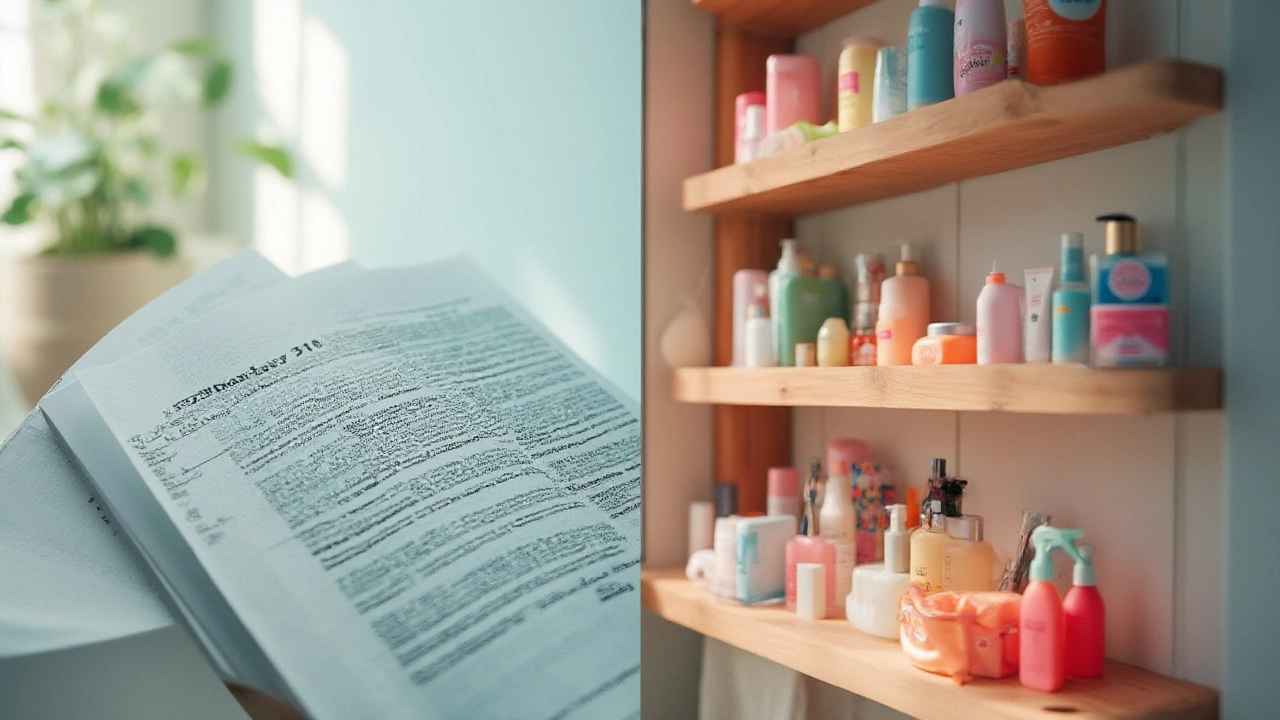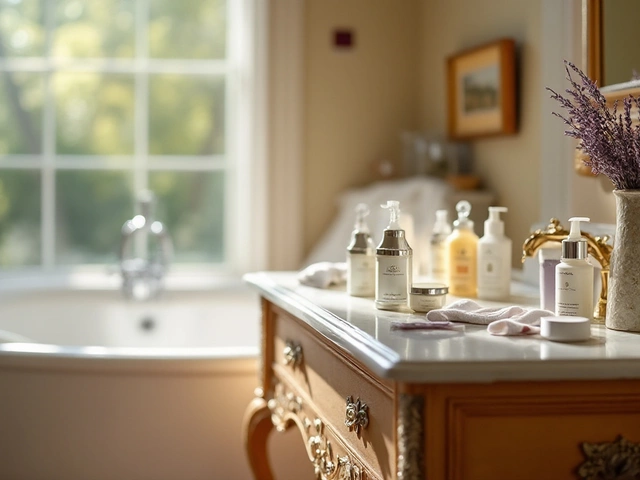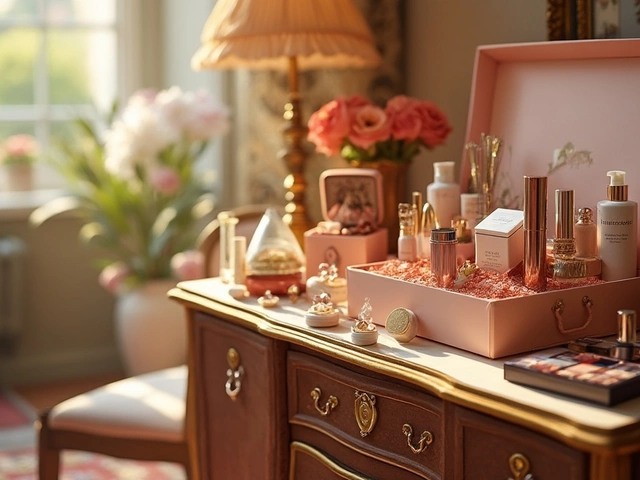Walk down any supermarket or pharmacy aisle and it hits you – beauty products are everywhere. Shelves stacked with fancy serums, brightly packaged lip gloss, tubs of cream, powders, sprays, gels, and stuff that sparkles. But here’s the twist: a lot of us use these products every single day and still get stumped on one simple question. What actually counts as a cosmetic?
Defining Cosmetics: More Than Meets the Eye
If you think cosmetics are just lipstick and mascara, think again. The "cosmetic" label covers a far wider territory than most people guess. Legally, a cosmetic is anything you put on your body to clean, beautify, change your appearance, or keep skin in good condition – but it’s not meant to cure or treat a disease. This is the critical edge that separates a daytime moisturiser from a hardcore acne treatment. In New Zealand, we usually follow wording similar to the Australian and European rules, which line up pretty closely with the U.S. FDA’s definition. Here’s what this boils down to in a nutshell: if the product’s main gig is making you look, smell, or feel somewhat better – but not promising to fix a medical injury or a disease – then it’s probably a cosmetic.
To get even more specific, think about your bathroom shelf. Your basic face cream? Cosmetic. That fizzy bath bomb? Also cosmetic. Lip balm, perfumes, deodorants that just mask odour instead of targeting sweat glands – all cosmetic. The law also ropes in soaps, shampoos, conditioner, hair dyes, nail polishes, and even toothpaste in some countries.
Science geeks and lawyers love categorising things, so there’s actually a table that often comes up, which separates "cosmetics" from "therapeutic goods," "medical devices," and "foods." (Here’s a simple one below, based on guidelines from Medsafe New Zealand and the FDA.)
| Product Type | Purpose | Typically Considered As |
|---|---|---|
| Hand Lotion | Moisturizes skin | Cosmetic |
| Anti-dandruff Shampoo | Treats dandruff (medical claim) | Therapeutic Good |
| Toothpaste (with fluoride) | Prevents dental cavities | Cosmetic & Therapeutic Good |
| Lipstick | Colours lips | Cosmetic |
| Eyelash Serum (promotes growth) | Stimulates lash growth | Therapeutic Good |
| Fragrance | Smells nice | Cosmetic |
One of the trickier areas is multipurpose products. Take toothpaste. The stuff that just freshens breath gets called a cosmetic, but if it says it “prevents cavities” (because of added fluoride), it’s both a cosmetic and a drug in many places around the world. Same goes for sunscreens. Facial mists with SPF are legally regulated as both cosmetics and medicines in places like New Zealand, Australia, the US, and the EU. That’s why you see so much fine print on those bottles – brands have to make sure they’re ticking the right boxes for both types of rules.
A big myth out there is that “natural” or plant-based products fall outside the cosmetic rules. Nope. If you use coconut oil as a hair treatment or baking soda to scrub your face, you're using a cosmetic under the law, even if nobody packaged it in a shiny plastic tube.
Here’s a tip: Look at labels for the words “cosmetic,” “therapeutic,” or “drug” to see if a product has crossed into the medical world. If it claims to heal, prevent, or cure, it’s not just a cosmetic. This label-splitting might sound dry, but it's what decides how closely things get tested and who watches over what goes into your daily products.
Another fun fact? The global cosmetics market – all those tubes, tubs, bottles and jars – was worth around USD 570 billion in 2023 and keeps growing each year. That means this isn’t just about looking cute; it’s a giant industry that takes up a surprising part of our lives and wallets.
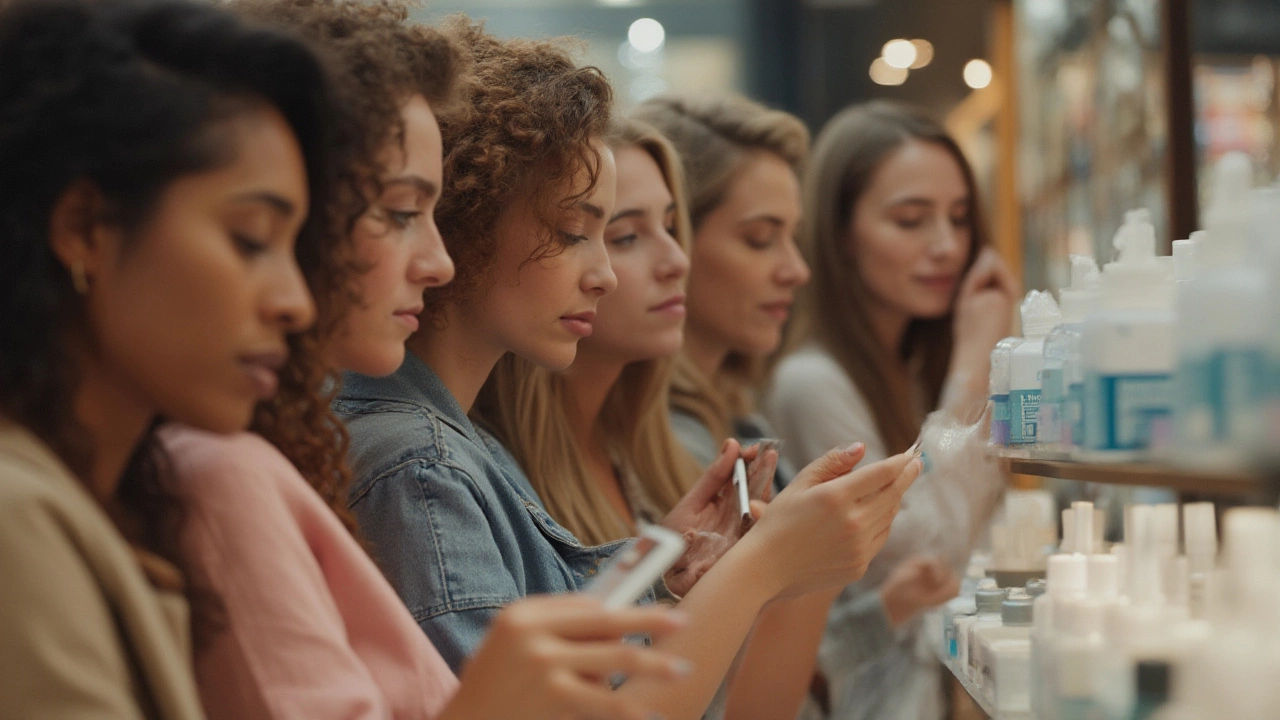
Everyday Products You Didn’t Know Were Cosmetics
People are often shocked to learn how far the reach stretches. It’s not just about foundation or eyeshadow palettes. Let’s break it down:
- Moisturisers – Pretty obvious, right? If it claims to simply hydrate, it's a classic cosmetic. If it promises to treat eczema? Then it’s a medical product.
- Deodorants – If they just cover scent, they’re cosmetics. If they stop you sweating through your shirt (antiperspirants), they're in the drug/medicine camp.
- Toothpastes, mouthwashes, breath sprays – These all fall under cosmetics if their only claim is to freshen breath or clean teeth. If they start talking about preventing gum disease or killing bacteria, you’re in medicine territory as well.
- Hair products – Shampoo, conditioner, hair spray, gel, and mousse? Cosmetics. Products for treating split ends or frizzy hair are fine. But if something claims to stimulate new hair growth, that’s a treatment, not a beauty product.
- Sunscreens – This is the category that breaks all the rules. Face creams with sun protection? Both a cosmetic and a drug in many countries. Here in NZ, anything that says “broad spectrum SPF” has to meet strict medicine-level standards.
- Nail varnish, cuticle softener – Give you prettier nails, which means cosmetic status.
- Temporary tattoos and body paint – You got it; cosmetic.
- Lotions with shimmer, glitter, tints – Just changing appearance? Cosmetic.
- Perfume and cologne – If they just make you smell good, they're cosmetics. Any extra claim (like “repels bugs for 8 hours”) runs into regulatory red tape.
- Facial wipes and cleansers – Meant and used to simply clean your skin, i.e., cosmetic.
Here’s something that catches people off guard: beauty tools aren’t cosmetics. So your eyelash curler, makeup brushes, or jade roller don't count – they’re considered beauty accessories instead. Only the stuff that you actually apply directly onto your hair, face, skin, or nails.
Before you throw out that dry shampoo because you heard it’s “not regulated,” don’t panic. Cosmetics are regulated for safety, labelling, and ingredients here in NZ and in most advanced countries. In fact, New Zealand’s Environmental Protection Authority and Medsafe work with international safety standards, so your face cream doesn’t just skate through with any old ingredient.
If you spot the word “paraben-free” or “fragrance-free,” that’s because some people have allergic or sensitive skin reactions. Labels like this help you choose safer options, especially if you’ve had itchy disasters after trying something new. The best tip? Always patch-test – put a tiny bit of a new product behind your ear or on your wrist first, wait 24 hours, and see if you react, before slathering it on your whole face. Don’t trust claims like “hypoallergenic” without doing your own test.
Fun stats: On average, women in countries like New Zealand, Australia, and the UK use at least 12 personal care or cosmetic products each day, while men use about 6. That’s thousands of ingredients a year. Most are safe, but the sheer number is a bit wild when you stop and count.
Don’t forget: baby wipes, beard oils, face primers, serums with added shimmer, and even tinted lip balms all fit the legal description. The world of what’s really a "cosmetic" is so much wider than just eyeshadow or blush.
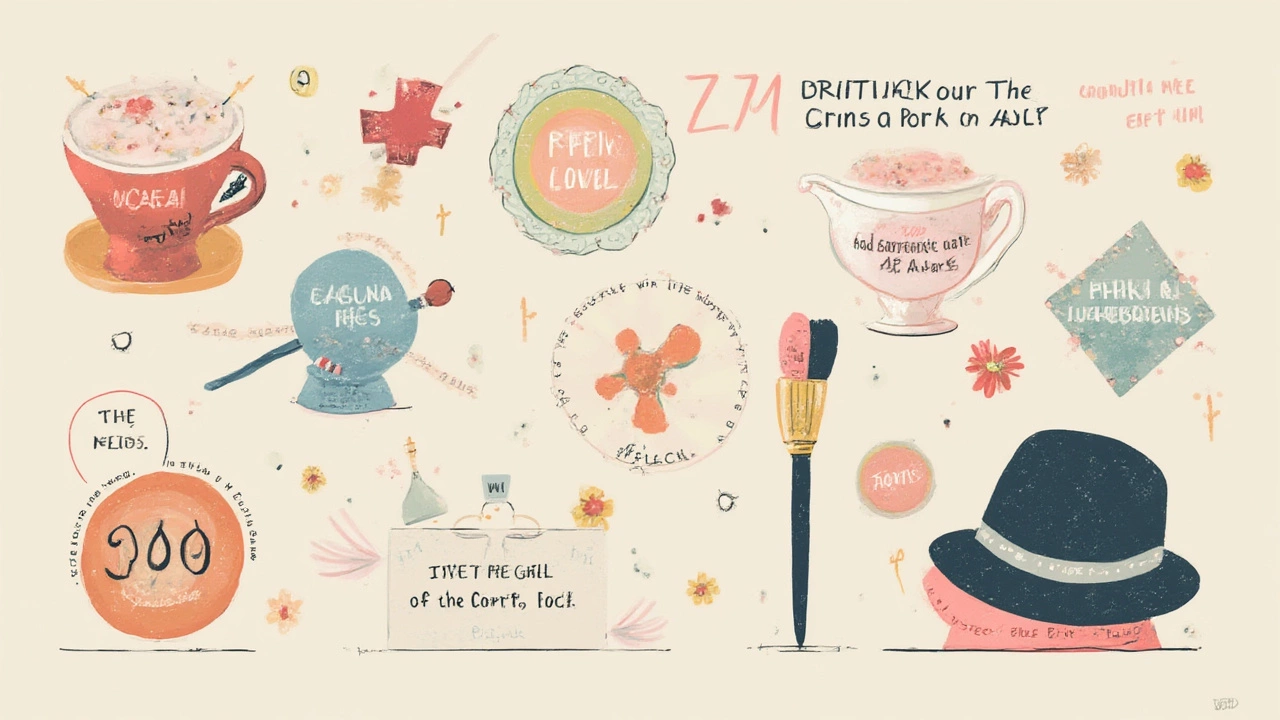
What’s Not a Cosmetic? The Grey Zones and Surprising Exceptions
This is where things get surprisingly complicated. Some products look and smell like classic beauty stuff, but legally, they're not cosmetics at all. The difference almost always comes down to health claims, how it’s used, and what’s inside. For example, anything promising to “treat,” “heal,” “restore,” or deeply alter body function is out of the cosmetic club and becomes a medicine, medical device, or therapeutic product.
Take acne treatments: a simple spot concealer is a cosmetic, unless it advertises active medication (like benzoyl peroxide or retinoids) – then, it’s both a cosmetic and medicine. That’s why some brands you can buy anywhere, but others you need to ask the pharmacist for, even if they look almost alike on the outside.
If you walk into a health shop, you’ll see "cosmetic" herbal balms sitting right next to eczema creams and CBD lotions. Those are regulated differently. Eczema creams, sunscreen labeled as “medicinal,” or anything with high-dose actives like prescribed retinol? Not cosmetics by law. This is why product descriptions always matter.
There are some fun outliers: tattoo inks aren’t treated as cosmetics. Nor are laundry detergents, teeth whitening trays (if they use strong peroxide), permanent makeup pigments, or over-the-counter ointments for psoriasis. Even some fancy spa facial peels jump over to the ‘medicine’ category if they use super-strong acids.
If you’re shopping online, check who regulates the brand. Reputable sites will say if a product is beauty-only or has crossed into medicine. Read the labels, avoid brands that promise miracle cures for real skin conditions without clear medical credentials, and always be a bit skeptical of claims that sound too good to be true. If it says, “clinically proven to cure,” it might need a pharmacy, not just a beauty aisle.
Why does all this matter? Because cosmetics don’t get tested for medical effectiveness. Their testing plays out more like food or cleaning products – for safety, allergic reactions, shelf-life, or stable colour, rather than healing your body. If you’re worried about what goes onto your skin, look for brands that are transparent about their ingredients and regulations. New Zealand, Europe, and Australia all have pretty tight laws about what you’re allowed to claim and which ingredients can sneak in. A product made locally usually faces more checks and balances compared to some cheap international internet buys, so it’s worth reading up.
Some tips for spotting safe cosmetics anywhere in the world:
- Avoid mystery brands with no ingredient list.
- Look for batch numbers, safety info, and contact details on the packaging.
- If you or your kids have allergies, double check for nuts, fragrances, or classic irritants.
- Don’t fall for “all natural” as a guarantee – plenty of plants, essential oils, and natural extracts can cause skin disasters.
- Strong claims need strong evidence. “Reduces wrinkles,” “shrinks pores,” or “removes scars” are classic red flags if they’re not backed by visible scientific data.
The bottom line? *What is considered a cosmetic* is simple on paper but surprisingly complex in real life. If you use it mainly to clean, freshen, or prettify – it’s probably a cosmetic. If it crosses over into the world of curing, healing, or physically changing how your body works, it’s officially something else, and needs tougher rules.
Next time you grab your daily handful of lotions or lipsticks, just remember: you’re handling products with a lot more history, science, and regulation than most folks realize – all tucked inside those colourful bottles and shiny jars. Stay curious. Your skin (and wallet) will thank you.
